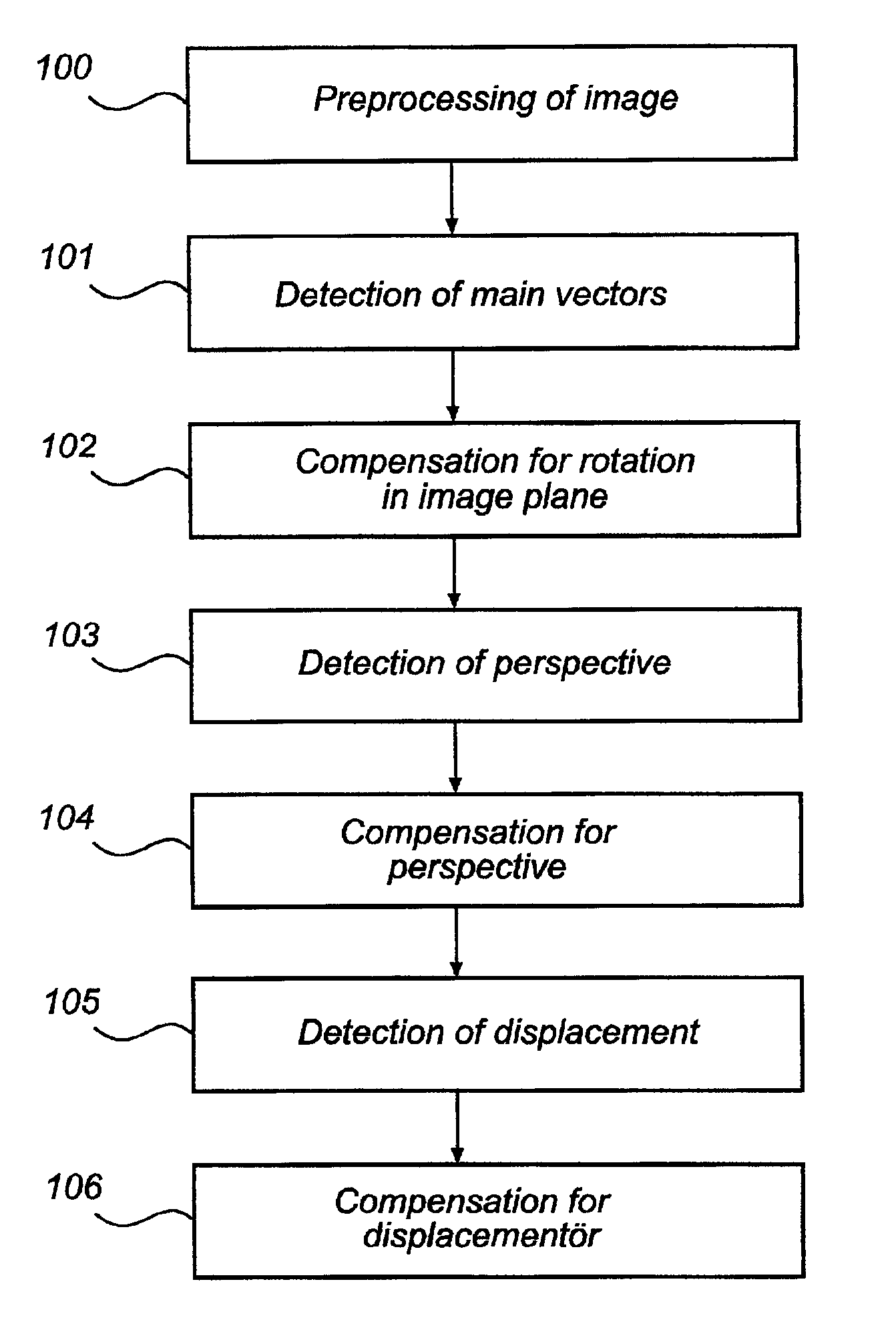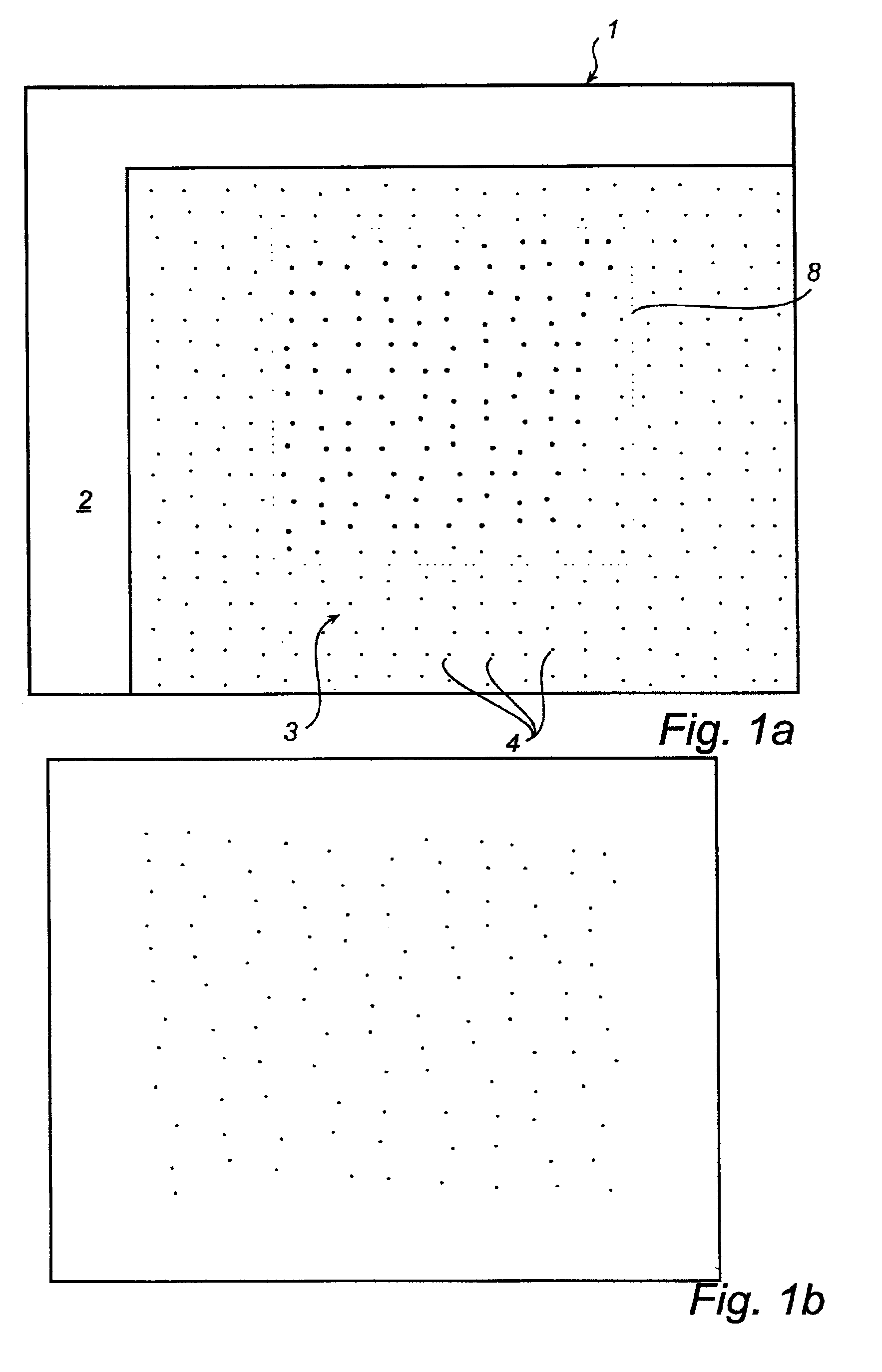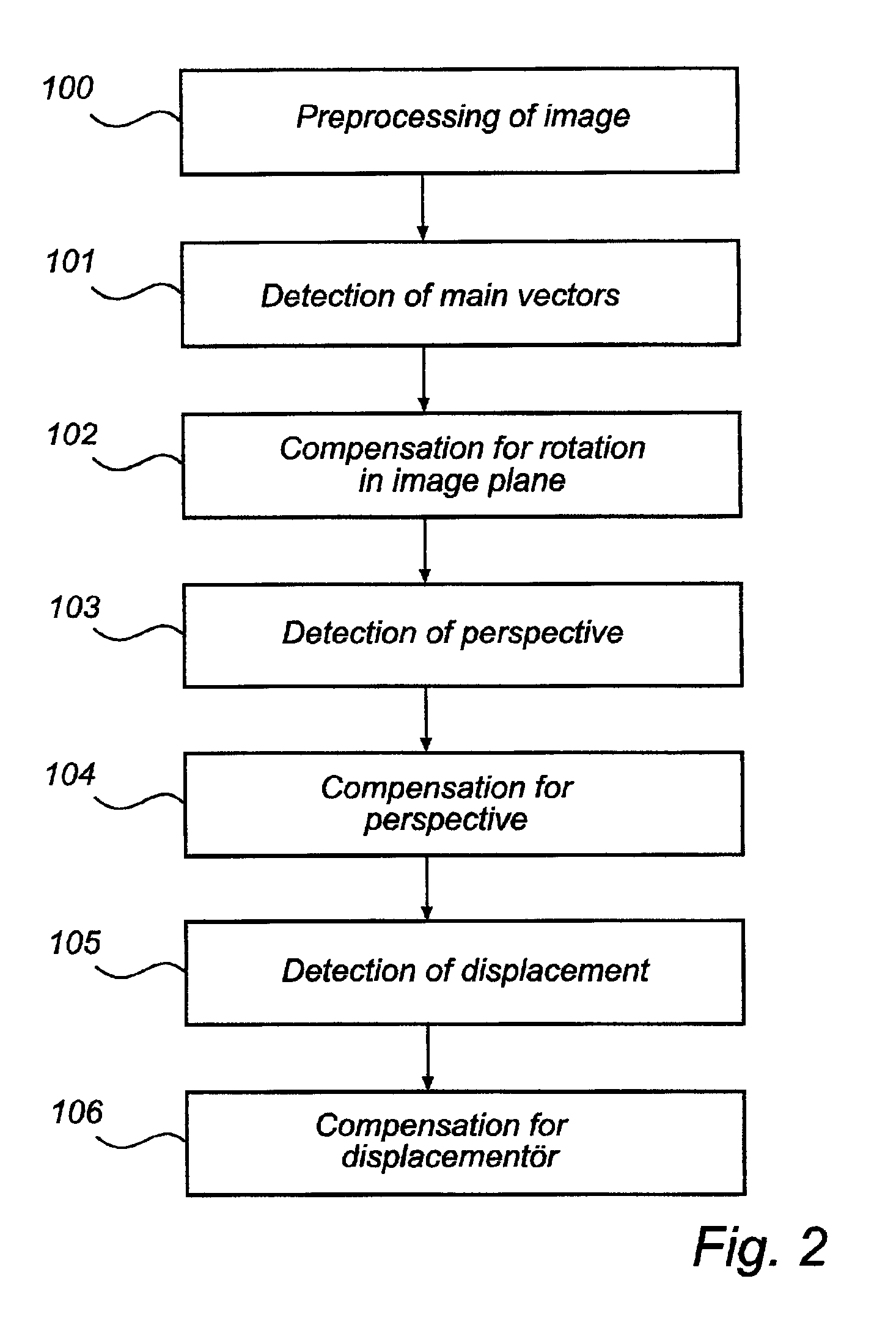Identification of virtual raster pattern
a virtual and raster pattern technology, applied in the field of raster pattern identification, can solve the problems of poor position resolution, poor accuracy, and complicated processing of the detected position-coding pattern by the processor, and achieve the effect of high degree of accuracy
- Summary
- Abstract
- Description
- Claims
- Application Information
AI Technical Summary
Benefits of technology
Problems solved by technology
Method used
Image
Examples
Embodiment Construction
[0056]FIG. 1a shows a part of a product 1 which on at least part of its surface 2 is provided with an optically readable position-coding pattern 3 which makes possible position determination. The position-coding pattern 3 comprises marks 4 which are systematically arranged across the surface, so that this has a “patterned” appearance. The position determination can be carried out on the whole surface of the product. In other cases, the surface that permits position determination can constitute a smaller part of the product. The product can, for example, be used to produce an electronic representation of information that is written or drawn on the surface. The electronic representation can be produced by determining the position of a pen on the paper continually while writing on the surface with the pen, by reading off the position-coding pattern.
[0057]More particularly, the position-coding pattern comprises a virtual raster 5 (indicated by broken lines in FIG. 9), which is neither v...
PUM
 Login to View More
Login to View More Abstract
Description
Claims
Application Information
 Login to View More
Login to View More - R&D
- Intellectual Property
- Life Sciences
- Materials
- Tech Scout
- Unparalleled Data Quality
- Higher Quality Content
- 60% Fewer Hallucinations
Browse by: Latest US Patents, China's latest patents, Technical Efficacy Thesaurus, Application Domain, Technology Topic, Popular Technical Reports.
© 2025 PatSnap. All rights reserved.Legal|Privacy policy|Modern Slavery Act Transparency Statement|Sitemap|About US| Contact US: help@patsnap.com



